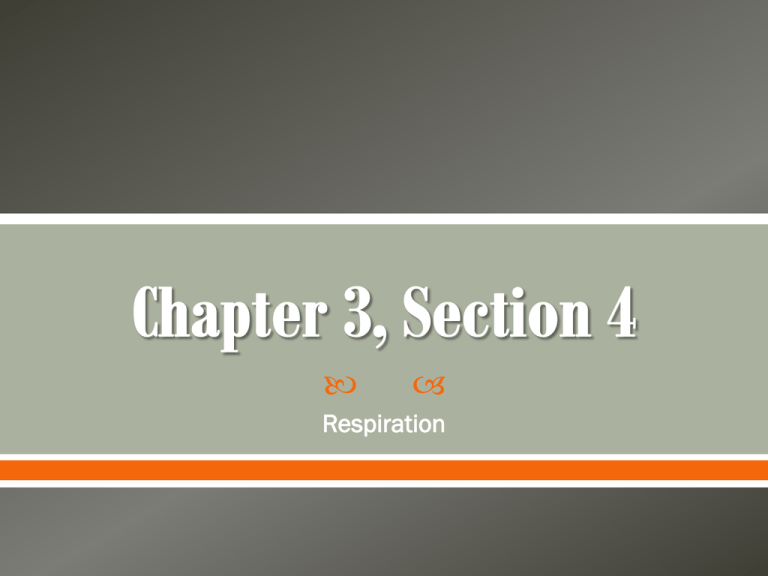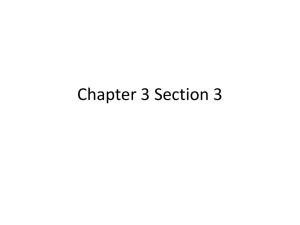Respiration
advertisement

Respiration Respiration: cells break down simple food molecules such as sugar and release the energy they contain Cells store energy in the form of carbohydrates 1. sugars 2. starches Energy stored in cells is like a savings account During photosynthesis, plants capture energy from sunlight and “save” it When cells need energy, they “withdraw” it by breaking down the carbohydrates for energy Respiration can mean two different things: 1. Breathing: moving air in and out of your lungs 2. Cellular Respiration: process that takes place inside cells Stage 1 o Takes place in the cytoplasm of the organism’s cells o Molecules of glucose are broken down into smaller molecules o NO oxygen is involved and only a small amount of energy is released Stage 2 o Takes place in mitochondria o Small molecules are broken down into even smaller molecules o Require oxygen and release a great deal of energy sugar oxygen Raw materials water carbon dioxide Products Can you notice anything familiar about the equation for respiration? o It is the opposite of the equation for photosynthesis During photosynthesis, carbon dioxide and water are used to produce sugars During respiration, sugar glucose and oxygen are used to produce carbon dioxide and water These two processes form a cycle that keeps the levels of oxygen and carbon dioxide fairly constant in Earth’s atmosphere an energy releasing process that does not require oxygen fermentation releases less energy than respiration Alcoholic Fermentation o Occurs when yeast and some other single-celled organisms breakdown sugars o The products are: alcohol, carbon dioxide, and small amount of energy o Important to bakers and brewers Lactic-Acid Fermentation o Muscle cells use up the oxygen faster than it could be replaced o One product of this type of fermentation is lactic acid o It is a painful sensation in your muscles, muscles feels weak and sore




